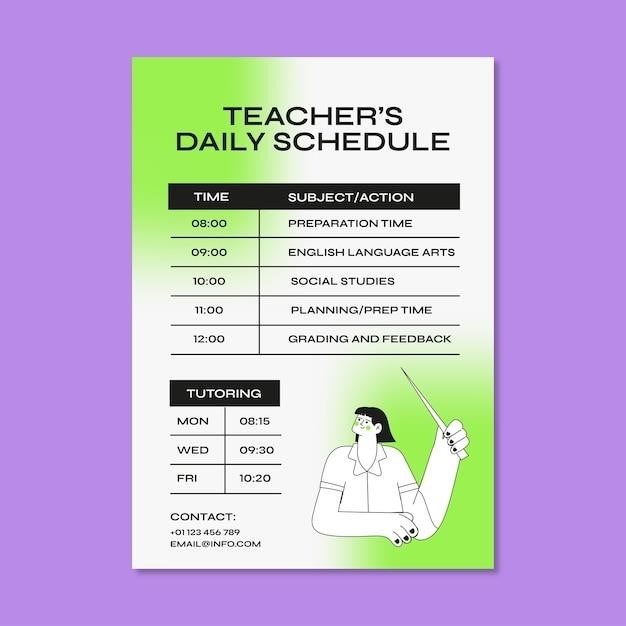sweat by lynn nottage pdf
Sweat by Lynn Nottage PDF⁚ A Comprehensive Overview
Finding digital copies of Lynn Nottage’s “Sweat” can be achieved through various online platforms, including Scribd and Internet Archive. These platforms offer PDFs or online viewing options, providing readers access to the Pulitzer Prize-winning play. Multiple editions exist, with publication details varying based on the source.
Availability and Access
Securing a PDF of Lynn Nottage’s “Sweat” involves exploring several avenues. Online platforms such as Scribd and the Internet Archive are frequently cited as sources offering either downloadable PDF versions or online access to the full text of the play. However, availability can fluctuate, and access might be subject to membership requirements or limitations on free downloads. Educational institutions often provide access to electronic databases containing the text, making it readily available to students and researchers. Additionally, some libraries may hold digital copies, accessible through their online catalogs or library systems. Checking with local libraries or university libraries could be beneficial for accessing a digital version. Remember to always respect copyright laws when accessing and using digital copies.
Publication Details and Editions
While precise publication details for various PDF versions of “Sweat” may vary depending on the source, the play’s original publisher is generally listed as Theatre Communications Group (TCG) in New York. The initial publication year is commonly cited as 2017, coinciding with the play’s Pulitzer Prize win. However, it’s important to note that different online sources and digital libraries may host versions with slightly different metadata or formatting. Some PDFs might include supplementary materials like character lists or production notes, while others might be strictly the play’s script. The existence of multiple online versions suggests potential variations in formatting, pagination, or included supplementary materials. Always check the source’s details for specific publication information.
Digital Copies and Online Resources
Locating digital copies of Lynn Nottage’s “Sweat” involves exploring various online platforms. Websites like Scribd and the Internet Archive frequently host PDFs or allow online reading of the play’s script. These sources may offer free access or require subscriptions/membership. Additionally, educational institutions with online library databases might provide access to digital versions for students and faculty. Be aware that the quality and completeness of these digital copies can vary. Some might be scans of physical copies, resulting in lower quality images or potential OCR errors. Others might be professionally digitized versions with enhanced formatting and searchability. Always check the source’s reputation and terms of use before downloading or accessing any digital copy.
Themes and Motifs Explored in Sweat
Nottage’s “Sweat” masterfully explores themes of deindustrialization’s impact, racial and class inequalities, and the complexities of friendship, loyalty, and betrayal within a working-class community.
Deindustrialization and its Impact
Lynn Nottage’s “Sweat” vividly portrays the devastating consequences of deindustrialization on a working-class town in Reading, Pennsylvania. The play masterfully depicts the economic hardship and social upheaval caused by the decline of the manufacturing industry. The once-thriving factory, a symbol of community and livelihood, becomes a ghost of its former self, leaving its workers struggling to adapt to a changing economic landscape. The play underscores the profound impact of job losses, not only on individual livelihoods but also on the fabric of the community, leading to increased tensions, social unrest, and a sense of disillusionment among the characters. Nottage’s meticulous research and interviews with real-life residents of Reading lend an authenticity and emotional depth to the portrayal of this societal shift. The narrative highlights the struggle for survival, the erosion of the American Dream, and the psychological toll of economic uncertainty on individuals and families.
Race, Class, and Social Inequality
In Lynn Nottage’s “Sweat,” the complex interplay of race, class, and social inequality forms the bedrock of the narrative. The play acutely examines how these factors intersect to shape the lives and experiences of its characters. The setting of Reading, Pennsylvania, a town grappling with deindustrialization, provides a fertile ground for exploring the tensions and divisions arising from economic disparities and racial prejudice. Nottage skillfully portrays the struggles faced by working-class individuals, highlighting the vulnerability of those marginalized by both race and class. The play does not shy away from depicting the prejudices and misunderstandings that fester within the community, exposing the fragility of interracial friendships and alliances in the face of economic hardship. The characters’ experiences demonstrate how deeply ingrained social inequalities impact personal relationships and contribute to a climate of distrust and conflict.
Friendship, Loyalty, and Betrayal
At the heart of Lynn Nottage’s “Sweat” lies the exploration of enduring friendships tested by the crucible of economic hardship and social change. The play centers on a group of longtime friends whose bonds are deeply intertwined with their shared experiences working at a local factory. As their lives are irrevocably altered by job losses and economic instability, the dynamics of their relationships shift dramatically. Loyalty is tested as old alliances fracture under pressure, and betrayals, both intentional and unintentional, emerge as a consequence of the characters’ individual struggles to survive. Nottage masterfully portrays the complexities of human relationships, demonstrating how the pressures of adversity can strain even the strongest bonds of friendship, revealing hidden resentments and vulnerabilities. The evolving friendships in “Sweat” offer a poignant exploration of the resilience and fragility of human connection in the face of profound societal shifts.
Critical Reception and Awards
Sweat garnered significant critical acclaim, winning the 2017 Pulitzer Prize for Drama and an Obie Award. Positive reviews praised its powerful portrayal of working-class struggles and complex characters.
Pulitzer Prize and Other Accolades
Lynn Nottage’s “Sweat” achieved significant recognition within the theatrical community, culminating in its prestigious win of the 2017 Pulitzer Prize for Drama. This esteemed award cemented the play’s position as a landmark work in contemporary American theatre, showcasing Nottage’s exceptional skill in portraying complex social issues with profound emotional depth and nuanced character development. Beyond the Pulitzer, “Sweat” also received an Obie Award, further validating its artistic merit and critical acclaim. These accolades highlight the play’s impact, solidifying its place as a seminal work exploring themes of deindustrialization, economic hardship, and the fracturing of community bonds against a backdrop of racial and class tensions. The awards underscore the play’s enduring relevance in sparking conversations about social inequality and its lasting consequences.
Reviews and Interpretations
Critical reception of Lynn Nottage’s “Sweat” has been overwhelmingly positive, with reviewers praising its powerful storytelling and nuanced portrayal of working-class struggles. Many lauded Nottage’s meticulous research and the authenticity of her characters, highlighting the play’s ability to evoke empathy and understanding for individuals grappling with economic hardship and social injustice. Interpretations of the play frequently center on its exploration of themes such as friendship, betrayal, and the corrosive effects of deindustrialization on communities. Some analyses focus on the play’s depiction of race and class dynamics, while others delve into the psychological impact of unemployment and the erosion of trust. The play’s ambiguous ending has also sparked considerable debate, prompting diverse interpretations regarding the characters’ futures and the potential for reconciliation or lasting division. The enduring power of “Sweat” lies in its ability to generate meaningful discussions and diverse interpretations of its complex characters and themes.
Stage Productions and Adaptations
Lynn Nottage’s “Sweat” has enjoyed numerous successful stage productions since its premiere. The Oregon Shakespeare Festival’s world premiere in 2015, directed by Kate Whoriskey, set a high standard for subsequent stagings. The play’s subsequent runs at Arena Stage in Washington, D.C., and other prominent theaters across the United States and the UK, have showcased its versatility and resonance with diverse audiences. These productions often highlight the play’s powerful ensemble work and the nuanced performances required of its complex characters. While information on specific adaptations beyond stage productions is limited in the provided text, the play’s enduring popularity and critical acclaim suggest the potential for future adaptations in other media, such as film or television. The play’s compelling narrative and exploration of timely social issues make it a strong candidate for adaptation, ensuring its continued relevance and accessibility to a wider audience.
Further Research and Related Works
Exploring Lynn Nottage’s other plays and works offers valuable context. Readers might also investigate similar plays addressing deindustrialization’s impact and social inequality.
Lynn Nottage’s Other Plays and Writings
To gain a deeper understanding of Lynn Nottage’s dramatic style and thematic concerns, exploring her extensive body of work is crucial. “Sweat,” while powerful in its own right, represents a significant piece within a larger tapestry of her contributions to American theater. Her other plays often delve into similar themes of social justice, economic disparity, and the experiences of marginalized communities. Investigating these works allows for a richer appreciation of her recurring motifs and evolving artistic voice. Nottage’s skill in crafting complex characters and weaving intricate narratives consistently shines through her various productions. “Ruined,” for example, explores the devastating impact of war on women in the Democratic Republic of Congo, offering a parallel exploration of trauma and resilience. “Intimate Apparel” provides a fascinating look at the life of a Black seamstress in early 20th-century New York, highlighting themes of identity, love, and economic survival. These works, along with others, reveal Nottage’s commitment to portraying the complexities of human experience and giving voice to often-overlooked stories. Delving into her essays and interviews can further illuminate her creative process and artistic intentions.
Similar Works Exploring Similar Themes
To expand your understanding of the issues raised in “Sweat,” consider exploring other plays and novels that grapple with similar themes of deindustrialization, economic hardship, and social inequality. Works focusing on the decline of American manufacturing and its impact on working-class communities offer valuable comparative perspectives. For example, investigate fictional narratives that depict the struggles of individuals and families affected by factory closures and job losses. Plays and novels exploring the intersection of race, class, and gender in the context of economic change provide further insights into the complexities of the social landscape depicted in Nottage’s play. Consider works examining the effects of globalization and automation on American labor, particularly those that highlight the experiences of specific communities. The exploration of friendship, loyalty, and betrayal within these challenging circumstances can provide a richer understanding of the human dynamics at play in “Sweat.” Examining the ways these other works portray the psychological and emotional consequences of economic upheaval can lead to a deeper appreciation of the themes present in Nottage’s play. Exploring these parallel narratives offers a broader understanding of the social and historical context within which “Sweat” exists.











